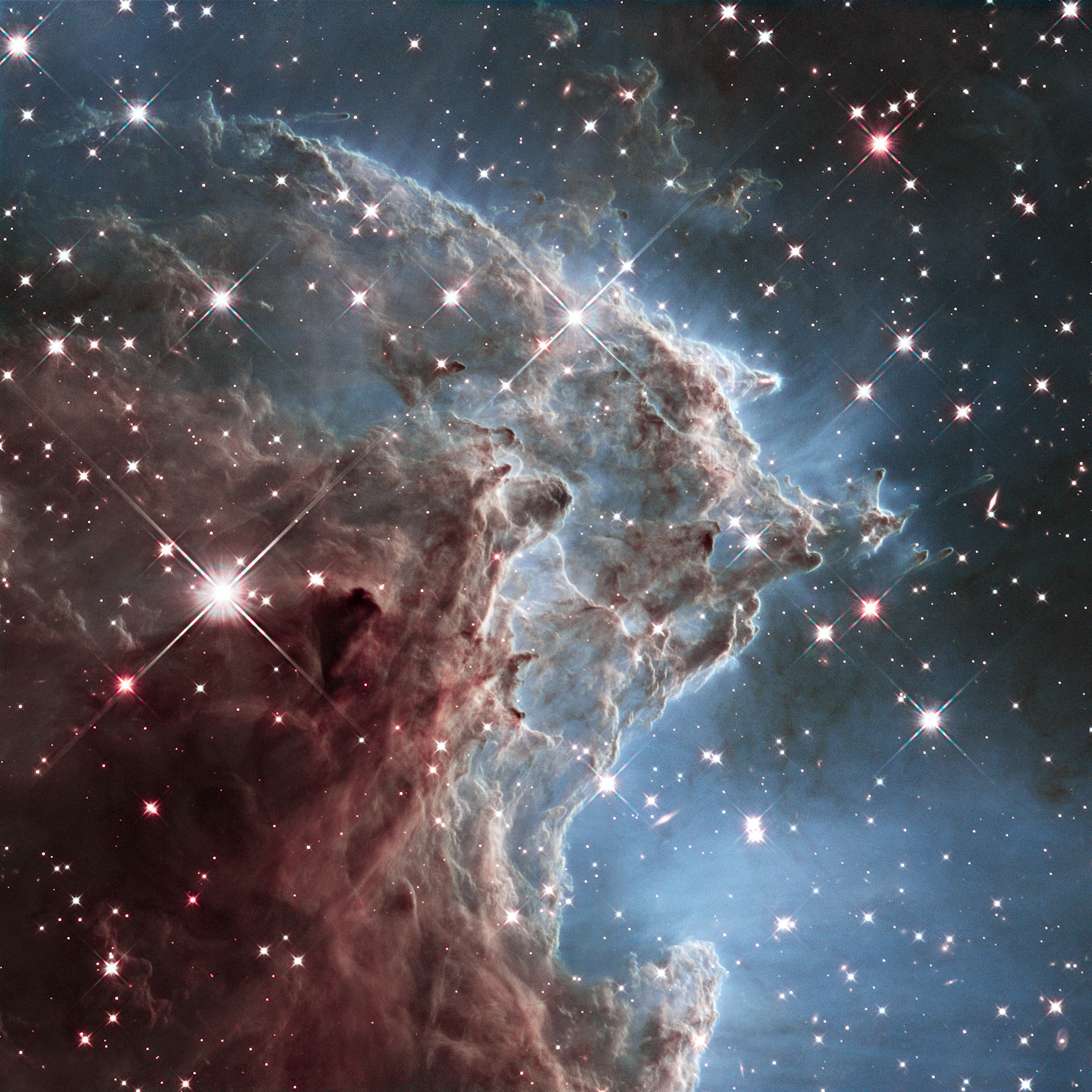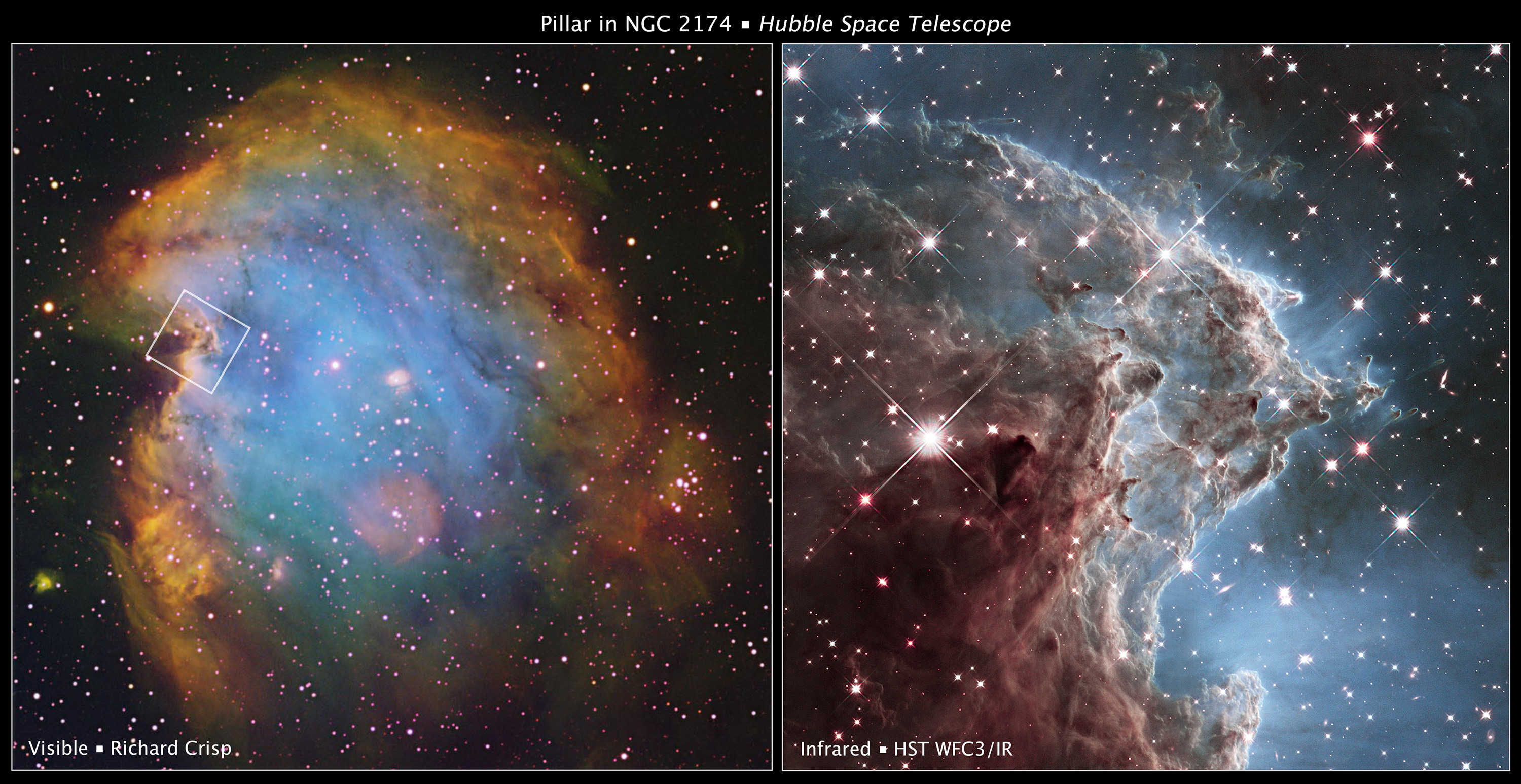Hubble Telescope Spies Amazing Star Factory Inside Space Monkey Head (Photo, Video)
NASA's Hubble Space Telescope has captured an amazing view of a distant starbirth factory, a nebula known as the "Monkey Head," to help celebrate the upcoming 24th anniversary of the iconic instrument's launch.
The new infrared mosaic from Hubble — which launched on April 24, 1990 — shows knotty curls of dust and gas in the Monkey Head Nebula, a star-forming region that lies about 6,400 light-years away from Earth and is also known as NGC 2174 and Sharpless Sh2-252. Scientists used the Hubble mosaic to create a spectacular video of the Monkey Head Nebula to explain the new cosmic views.
"Massive, newly formed stars near the center of the nebula (and toward the right in this image) are blasting away at dust within the nebula," Hubble officials wrote in a description of the image, which was captured in February and released on Monday (March 17). You can see more Monkey Head Nebula views here, along with other Hubble Space Telescope images.
"Ultraviolet light from these bright stars helps carve the dust into giant pillars. The nebula is mostly composed of hydrogen gas, which becomes ionized by the ultraviolet radiation," they added. "As the interstellar dust particles are warmed from the radiation from the stars in the center of the nebula, they heat up and begin to glow at infrared wavelengths."
Though the Hubble Space Telescope is famous today for its gorgeous cosmic images and contributions to astronomy in a number of fields, the mission had a bumpy start. Hubble launched to space with a primary mirror ground to the wrong prescription, and five space shuttle missions were required to repair and upgrade the huge instrument.
Hubble officials have said they hope to keep the telescope operating through at least 2020, ensuring some scientific overlap with its designated successor, NASA's infrared-optimized James Webb Space Telescope. The $8.8 billion JWST mission is currently scheduled to launch in 2018.
Follow Mike Wall on Twitter @michaeldwall and Google+. Follow us @Spacedotcom, Facebook or Google+. Originally published on Space.com.
Breaking space news, the latest updates on rocket launches, skywatching events and more!

Michael Wall is a Senior Space Writer with Space.com and joined the team in 2010. He primarily covers exoplanets, spaceflight and military space, but has been known to dabble in the space art beat. His book about the search for alien life, "Out There," was published on Nov. 13, 2018. Before becoming a science writer, Michael worked as a herpetologist and wildlife biologist. He has a Ph.D. in evolutionary biology from the University of Sydney, Australia, a bachelor's degree from the University of Arizona, and a graduate certificate in science writing from the University of California, Santa Cruz. To find out what his latest project is, you can follow Michael on Twitter.



